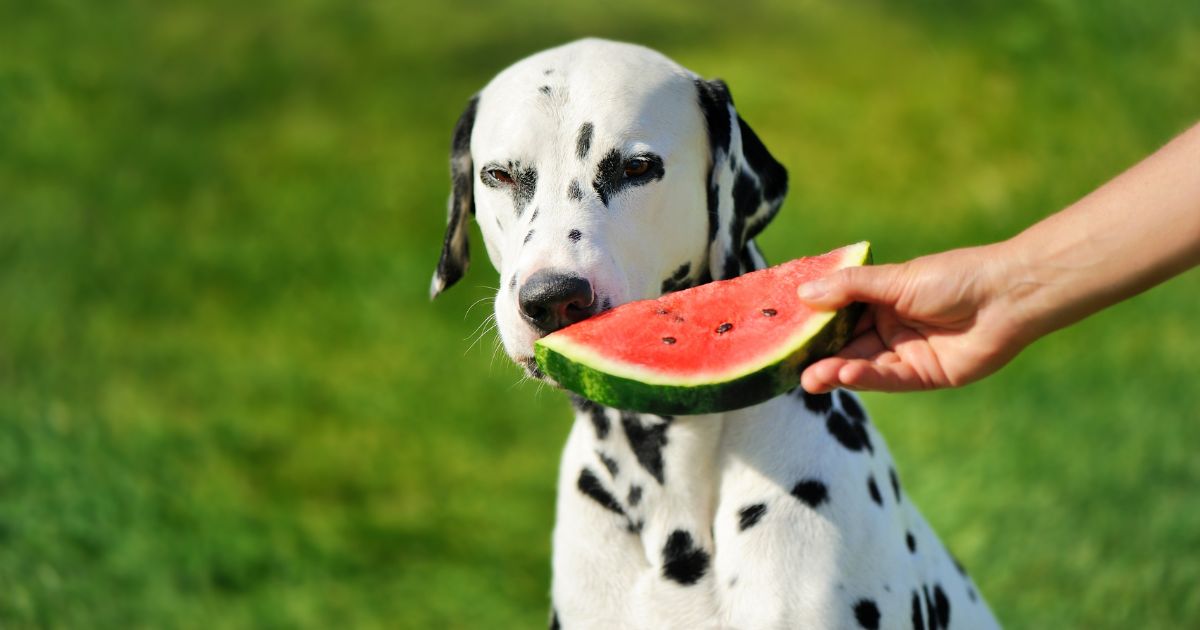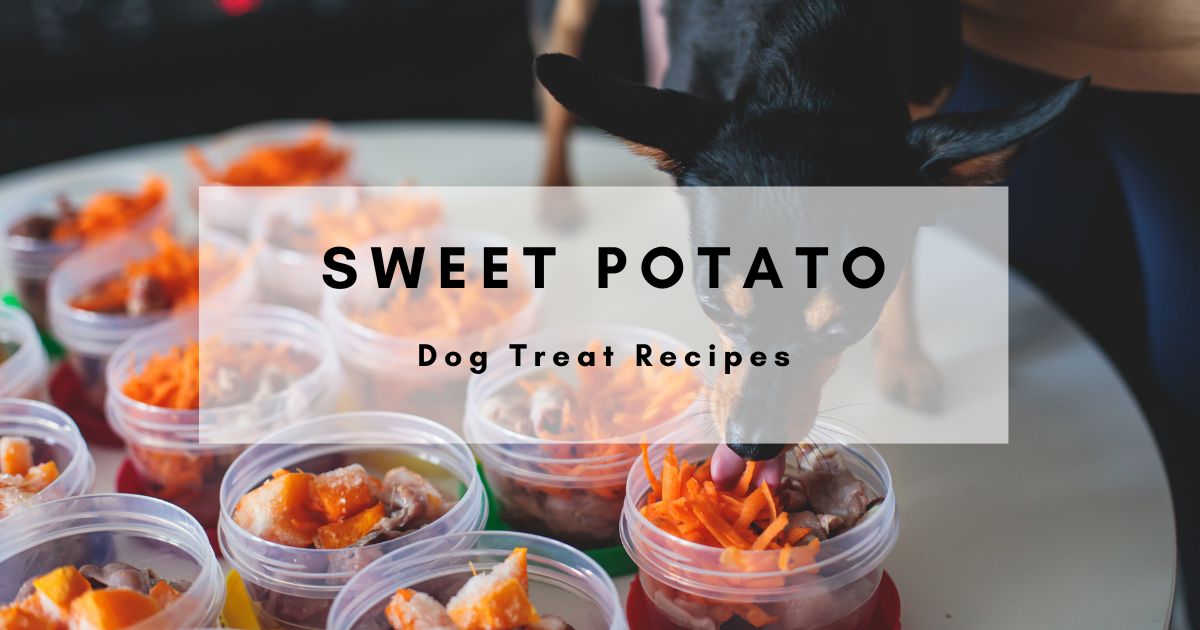Fruitful Feasts: Safe and Healthy Fruit Recipes Your Dog Will Love

A Delightful Introduction to Fruity Treats for Dogs

The Benefits of Incorporating Fruit into Your Dog's Diet
While most dogs do need animal protein in their diet, there's growing evidence that added fruit may offer additional potential health benefits. From providing essential vitamins and minerals to supporting overall well-being, adding fruit to your dog's meals can be a simple yet effective way to help support their nutrition.1-3*
Let’s explore how to include fruit in your dog's diet – and how to do it safely and effectively. Plus, there are some fun recipes to try!
Safe Versus Unsafe Fruits for Canines
It’s important to acknowledge that not all fruits are safe for dogs to consume. So, you always need to be clear on which fruits are a treat and which are a potential threat.
For example, apples (minus the seeds and core), blueberries, watermelon, and bananas are on the “safe” list, while grapes, cherries, and avocados are toxic to dogs. Be sure to do your homework – or consult with a vet – before introducing any new fruit to your dog's diet.4
Feeding Fido Fruit: Portions and Allergies
How Much Fruit Should Your Dog Consume?
When it comes to fruit in your dog's diet, think of it as a garnish or an “extra,” rather than a main meal. A good rule of thumb is that treats, including fruit, should only make up about 10% of your dog's daily calorie intake.5
For the average-sized pup, a couple of banana slices or a few blueberries is plenty. It’s tempting to share more, especially when they look up with those big, pleading eyes, but moderation is key to keeping their belly happy.
Always consider your dog's size, activity level, and any medical conditions they may have when determining the right amount. The best way to do this is to consult with your vet, so you can personalize your pal's fruity quota.
Identifying and Managing Possible Fruit Allergies in Dogs
Just like us, dogs can be allergic to certain foods, including fruits. If you're introducing a new fruit into your dog's diet, start with a small amount, and monitor them for any signs of an allergic reaction. Symptoms to look out for include itching, swelling, difficulty breathing, or gastrointestinal upset, such as vomiting or diarrhea.6
If you suspect your furry buddy has a fruit allergy, contact your veterinarian. They can perform tests to confirm the allergy and guide you on which fruits to avoid. Your vet is always going to be your best ally in keeping your dog healthy and happy.
How to Serve Fruit to Dogs
Integrating Fruit Into Daily Meals
When it's time to jazz up your dog's daily meals, fruit can be a great addition, but it's important to serve it safely.
Always ensure that fruit is sliced into size-appropriate pieces for your dog. The smaller the pup, the smaller the pieces. You can also puree the fruit.
If the fruit has a core, like apples, pears, or pineapples – or seeds, like a watermelon – these need to be removed before serving.
A convenient and balanced way to give your dog a daily serving of fruit is by feeding them a balanced high-protein meal that incorporates fruit, like Dr. Marty Nature’s Blend Essential Wellness. Each batch is made with premium cuts of meat, veggies, seeds, and antioxidant-rich fruits — like apples, blueberries, and cranberries. The food is then freeze-dried raw to help lock in nutrients and flavor.
Nature’s Blend also contains zero artificial preservatives, additives, fillers, or synthetic ingredients. So, you know you’re giving your dog the very best for their health.
Interactive Food Games and Toys
Mix up your dog's playtime by incorporating fruits into fun, mentally stimulating games. Hide small bite-sized pieces of dog-safe fruits inside interactive toys or puzzles, letting them work for their tasty reward. It’ll not only nurture their natural foraging instincts, but it can also keep them entertained and engaged.
Always supervise playtime to ensure safety and fun for everyone involved.

Bark-Worthy Fruit Recipes for Your Four-Legged Friend
Just like humans, dogs appreciate some variety in life. So, why not surprise your pup with a spin on their favorite fruit? Here are five unique recipes starring five dog-friendly fruits.
Remember, treats like these should be fed in moderation, and always watch for any signs of allergic reactions when trying out new ingredients.
Peanutty Apple Treats for Dogs
Get ready to treat your best pal to some homemade apple goodness with a recipe they'll sit, stay, and roll over for!
Yield: About 50 biscuit treats
Ingredients
- 1/2 apple, finely chopped
- 1 1/2 cups coconut flour
- 1/2 cup peanut butter (xylitol-free)
- 4 organic eggs
- 1 cup + 1/2 tbsp unsweetened apple puree (add more if dough is too dry)
Instructions
- Preheat the oven to 350ºF.
- Combine all ingredients, and then knead into a ball.
- Roll out dough, and use some cute cookie cutters to cut shapes.
- Transfer treats to a lined baking sheet.
- Bake for 10-12 minutes until cookies are hard.
- Let cool completely before serving to your pup.
You'll be the apple of your dog's eye after giving them this treat. Store them in an airtight container for a fresh snack, time after time.
Best For: Dogs who love a crunchy snack, and pet parents who delight in baking homemade treats with love.Tropical Tango: Frozen Pineapple Pupsicles Recipe
Summer days call for a refreshing treat that'll make your pup feel like they're on a tropical getaway. These Frozen Pineapple Pupsicles are not only delicious, but they’re also easy to make. They'll help your dog cool down and give them a healthy dose of hydration and vitamins.Ingredients
- 1 cup fresh pineapple, peeled and cored
- 1 cup coconut water or plain water
- 1/2 cup plain yogurt (xylitol-free)
Instructions
- Blend all ingredients together.
- Fill an ice cube tray.
- Pop one out whenever your dog needs a cool treat.
Best For: Pups looking for a delicious cool-down treat, and pet parents who want a quick and easy recipe to make.
Homemade Blueberry Muffins for Dogs
Blueberry muffins aren't just for humans. Full of antioxidants and fiber, blueberries are a superfood and make for a 'pawfect' dog-friendly treat — in moderation, of course.
Ingredients
- 1 egg white whipped (a substitute for baking soda)
- 2 cups coconut flour
- 3/4 cup unsweetened applesauce
- 1/2 cup plain yogurt (xylitol-free!)
- 1 whole egg
- 1 cup fresh or frozen blueberries
*Add more applesauce if mix is too dry
Instructions
- Preheat the oven to 350ºF.
- Whip egg-white with a hand blender.
- Mix coconut flour, applesauce, yogurt, and egg.
- Gently stir in the whipped egg white and blueberries.
- Lightly grease a silicone muffin tray.
- Fill molds with batter.
- Bake for approx 15 minutes, using a toothpick to check for doneness.
Voilà! You've got yourself some Berrylicious Bites that are sure to get that tail wagging.
Best For: Dogs who can't resist a soft, fruity snack, particularly those with a penchant for berries.
Creamy Layered Watermelon Treat for Dogs
Nothing says summer like watermelon, and your four-legged friend can join in on this tropical treat, too. Not only is watermelon a hydrating fruit, which is fantastic for those hot days, but it's also packed with vitamins and minerals.
These Watermelon Treats for dogs are a sweet, creamy, and hydrating snack that your pup is bound to love.
Ingredients
- 4 cups of seedless watermelon cubes
- 12 oz. plain Greek yogurt (unsweetened, xylitol-free)
Instructions
- Puree watermelon cubes.
- Place 1 Tablespoon of Greek yogurt into the bottom of each ice cube tray mold.
- Fill the rest of the mold with watermelon puree.
- Freeze.
Now, let your dog lick these watermelon treats away!
Best For: Canines that need a low-calorie, hydrating reward on steamy days, or after vigorous play.
Note: Watermelon is mostly water, so it's excellent for hydration, but always remove the seeds and rind to prevent any choking hazard or gastrointestinal upset.
Strawberry Ice Cream Recipe for Dogs
Sweet, red, and full of flavor, strawberries are a berry special treat for dogs, naturally full of fiber, vitamins, and antioxidants. Whip them into a cool and creamy treat for those hot days.
Ingredients
- 10 fresh strawberries
- 1 medium ripe banana
- 1 cup plain Greek yogurt (xylitol-free)
Instructions
- Pulse strawberries and banana together in a food processor until smooth.
- Stir in the yogurt by hand until well combined.
- Pour the mixture into a freezer-safe air-tight container, and freeze for a minimum of 4 hours.
- Scoop your ice cream into a doggie (or human) bowl – and serve.
Best For: Pups who love a pop of fruit flavor and have a fondness for your dessert!
Just remember, strawberries contain sugar, so these treats are meant as an occasional delight rather than a staple.
FAQs: Answering Common Questions About Dogs and Fruit

Can dogs eat all types of fruit safely?
No, dogs can't eat all types of fruit safely.
While many fruits, like apples, bananas, and blueberries are perfectly okay for dogs (in moderation), others can be harmful. Grapes, raisins, and cherries are toxic to dogs and should always be avoided. Avocado, which contains persin, is another no-go because it can cause vomiting and diarrhea in dogs. It's essential to know which fruits are safe and to introduce any new foods gradually into your dog's diet. When in doubt, check with your vet.7
How can I introduce new fruits into my dog's diet without causing tummy upset?
Introducing new fruits into your dog's diet should be done slowly. Start with a tiny piece to gauge their reaction, and stick to one new fruit at a time. Give it a few days before trying another new fruit to help ensure there's no allergic reaction or digestive upset.
If all goes well, and your dog seems to enjoy and tolerate the fruit, you can slowly increase the amount. Always keep an eye out for any changes in their behavior or bowel movements, and consult your vet with any concerns.
Sources
- https://www.petmd.com/dog/nutrition/evr_dg_focusing_on_protein_in_the_diet
- https://www.researchgate.net/figure/Omnivorous-dog-traits-revisited-Dogs-are-classified-as-omnivores-based-on-traits-that_fig1_268743597
- https://animalwellnessmagazine.com/why-your-dog-should-eat-fruits-and-veggies/
- https://www.akc.org/expert-advice/nutrition/fruits-vegetables-dogs-can-and-cant-eat/
- https://www.vetmed.ucdavis.edu/sites/g/files/dgvnsk491/files/inline-files/treats-guidelines-for-dogs-2020.pdf
- https://vcahospitals.com/know-your-pet/food-allergies-in-dogs
- https://www.akc.org/expert-advice/nutrition/fruits-vegetables-dogs-can-and-cant-eat/
Related posts


